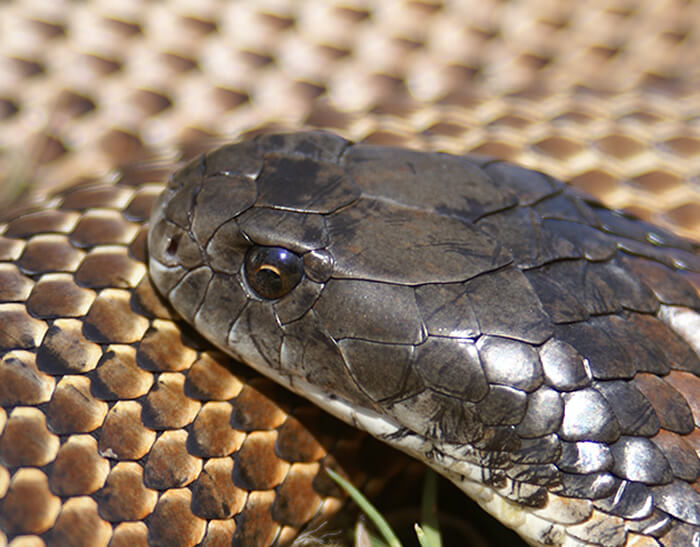Introduction
When it comes to the fascinating world of serpents, couple of types catch the imagination fairly like the infant tiger snake. Understood for their distinct coloration and potent poison, these snakes are an important component of Australia's distinct Yellow faced whip snake bite community. In this detailed post, we will certainly delve into different aspects of baby tiger serpents, including their habits, environment, and exactly how to safely connect with them. Whether you're a wildlife enthusiast or merely curious regarding these creatures, recognizing infant tiger serpents can help promote a much deeper admiration for nature.
Baby Tiger Snakes: What You Need to Find Out About Their Behavior and Habitat
What Are Baby Tiger Snakes?
Baby tiger serpents are juvenile forms of the extremely venomous types understood clinically as Notechis scutatus These serpents are mostly discovered in coastal areas of Australia, specifically in Tasmania and southern Victoria. As they grow, their pigmentation changes from an extra soft palette to the particular yellow and black bands that give them their name.
One remarkable facet of infant tiger serpents is their dimension; hatchlings commonly gauge around 25-30 centimeters in size. Regardless of their tiny stature, they possess a surprising amount of venom that can be damaging to people if bitten.
Physical Characteristics
Tiger serpents have a number of key physical characteristics:
- Coloration: The unique banding pattern typically ends up being more noticable as they mature. Size: Grownups can reach sizes of up to 2 meters. Body Shape: They have a robust body that aids in swimming and terrestrial movement.
Where Do Child Tiger Snakes Live? Comprehending Their Habitat
Understanding the habitat choices of child tiger snakes is crucial for both conservation efforts and public security. These serpents prosper in numerous atmospheres:
- Wetlands: Marshes and swamps offer ample hunting grounds. Coastal Regions: Often located near beaches where they can hunt for prey. Woodlands: Thick plants uses cover from predators.
Geographical Distribution
Tiger serpents are primarily located along Australia's southerly coastline, including:
- Tasmania: Home to among one of the most infamous populations. Victoria: Especially in locations near water bodies.
Are Tiger Snakes Venomous? A Deep Dive into Their Venom
One common concern emerges when going over child tiger serpents: "Are tiger serpents poisonous?" The answer is a definite yes!

Venom Composition
The venom of tiger snakes has neurotoxins that can create paralysis, coagulopathy (blood clot problems), and possibly death if untreated. Below's what you need to recognize:
- Effects on Humans: A bite from a tiger serpent can lead to signs like swelling, discomfort at the bite website, nausea, and also respiratory failure.
Comparison with Various other Poisonous Snakes
In comparison to other Australian snakes such as the eastern brown snake or king brown serpent, tiger snake poison is considered among one of the most potent. Nevertheless, fatalities are unusual due to enhanced clinical therapies and accessibility http://emilioifne996.wpsuo.com/the-importance-of-a-snake-bite-first-aid-kit-in-australia to antivenom.
Behavioral Patterns of Infant Tiger Snakes
Understanding exactly how child tiger serpents act is vital for those that live in or go to areas where these reptiles are prevalent.
Nocturnal Habits
Most child tiger snakes exhibit nighttime behavior. They tend to forage for food throughout cooler night temperature levels. This flexibility assists them stay clear of predators while enhancing their hunting efficiency.
Hunting Techniques
Their searching strategies include:
- Ambush Predation: Waiting inactive until prey comes close. Active Foraging: Proactively relocating via plant life or along waterways trying to find food.
First Help for Serpent Bites: What You Need to Know
Despite being remarkable creatures, encounters with child tiger snakes can result in unsafe circumstances if attacks happen. Understanding first aid procedures can conserve lives.

Immediate Steps After a Bite
Remain calm; panic boosts heart rate. Immobilize the influenced limb utilizing a splint or bandage. Seek instant clinical interest-- antivenom may be necessary.Creating a Serpent Bite Emergency Treatment Kit
A well-prepared emergency treatment kit ought to consist Conservation of Australian snakes of:
|Product|Function|| ------------------------------|--------------------------------------|| Compression plaster|To paralyze the limb|| Splint|Stabilizes broken bones or joints|| Antihistamines|Relieves allergies|| Emergency situation contact numbers|Quick accessibility throughout emergency situations|

Common Misconceptions Concerning Tiger Snakes Debunked
Many misconceptions border these appealing reptiles; allow's clear up some false impressions commonly held by people.
Myth # 1: All Tiger Snakes Are Aggressive
While some individuals may display protective habits when threatened, not all tiger snakes screen aggressiveness towards people unless provoked.
Myth # 2: Infant Tiger Snakes Are Less Hazardous Than Adults
This myth could not be even more from the truth! Infant tiger snakes contain almost as much poison as adults about their dimension; therefore they position substantial threats if bitten.
FAQs About Child Tiger Snakes
What do baby tiger snakes eat?- They largely eat tiny creatures, birds, frogs, and fish.
- Look for slim bodies with pale banding patterns that come to be a lot more noticable as they mature.
- Yes! Birds of victim and larger reptiles might target them.
- Typically every few weeks as they grow rapidly during their early life stages.
- While some individuals do maintain them unlawfully without authorizations because of their dangerous nature; it's normally not suggested offered their venomous status.
- With prompt clinical treatment-- including antivenom-- the survival rate is high!
Conclusion
In summary, recognizing baby tiger serpents-- what they eat, where they live, just how they act-- can furnish us with important knowledge regarding these impressive yet dangerous creatures. The value of education bordering emergency treatment actions can not be overstated; understanding exactly how to react successfully after a bite might conserve lives while promoting regard for our slinking next-door neighbors within Australia's rich biodiversity spectrum.
By valuing these snakes' duties within ecosystems-- and identifying potential risks-- we advertise coexistence instead of fear-based reactions towards each other's existence in nature's grand tapestry! Whether you're a serious hiker contemplating your following journey or just interested concerning regional wildlife experiences near home-- this guide functions as your relied on referral factor on the enigmatic world populated by our pals-- the amazing baby tiger snake!